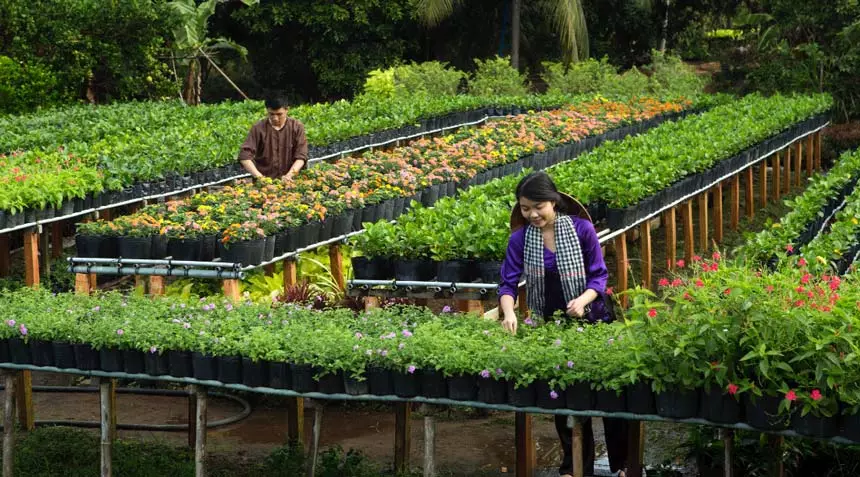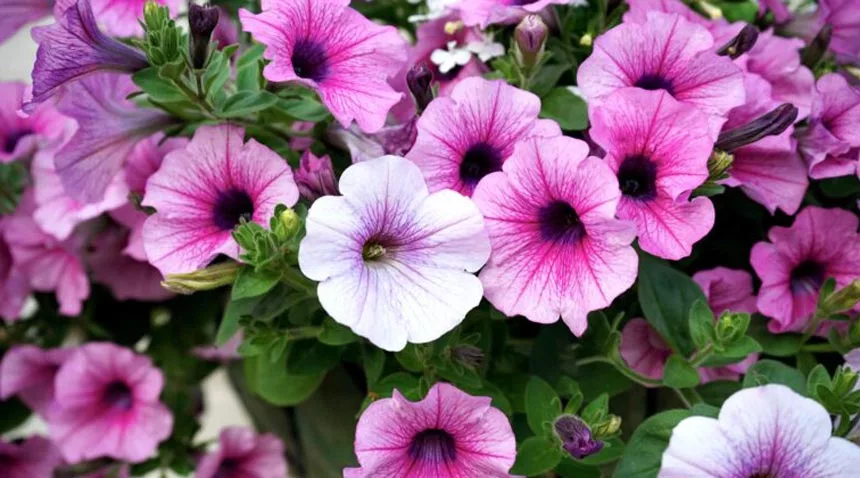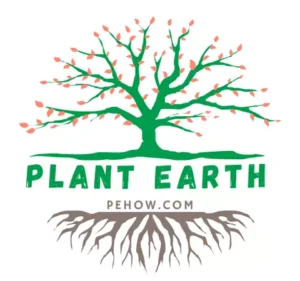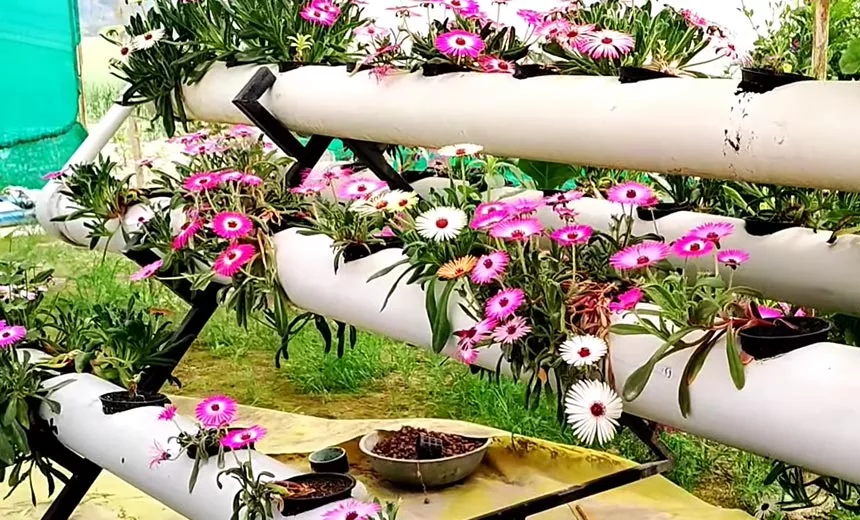Can you grow flowers hydroponically? A Comprehensive Guide. In this article, we will discuss the basics of hydroponics and how it can be used to grow flowers successfully. We will also be looking at the advantages of using this method and the different types of hydroponic systems available. Finally, we will give you tips on setting up your hydroponic system and troubleshooting any problems you may encounter.
What is hydroponics, and how does it work
Hydroponics is a method of growing plants in water instead of soil. The plant’s roots are suspended in a nutrient-rich solution, and it can absorb the nutrients it needs to grow. This method can be used to grow various plants, including flowers.
One of the main benefits of using hydroponics is that it can grow plants in areas where the soil is not suitable or available. This means that hydroponics can be used to grow flowers in places like deserts or on rooftops. Hydroponics can also be used to grow plants indoors, making it an excellent option for those who do not have outdoor space.
Hydroponics can also be a more efficient way of growing plants. When plants are grown in soil, they can use up to 30% of the water they take to transport the nutrients they need from the roots to the rest of the plant. With hydroponics, the roots are already in contact with the nutrient solution so that the plant can use less water overall. This can be beneficial in areas where water is scarce.
A few different types of hydroponic systems can be used to grow flowers. The type of system you choose will depend on the size and type of plants you want to grow and your budget.
The most common type of hydroponic system is the drip system. In a drip system, nutrient-rich water is slowly dripped onto the roots of the plants. The water then drains away, taking the nutrients with it. Drip systems can be used to grow various plants, including flowers.
Another popular type of hydroponic system is the wick system. In a wick system, the roots of the plants are suspended in a nutrient solution, and a wick delivers the solution to the roots. Wick systems are often used for smaller plants, such as herbs or houseplants.
Advantages of growing flowers hydroponically

There are many advantages to growing flowers hydroponically. One of the main advantages is that it can be used to grow plants where the soil is unavailable. Hydroponics can also be used to grow plants indoors, making it an excellent option for those who do not have outdoor space.
Hydroponics can also be a more efficient way of growing plants. When plants are grown in soil, they can use up to 30% of the water they take to transport the nutrients they need from the roots to the rest of the plant. With hydroponics, the roots are already in contact with the nutrient solution so that the plant can use less water overall. This can be beneficial in areas where water is scarce.
Disadvantages of growing flowers hydroponically
There are a few disadvantages to growing flowers hydroponically. One disadvantage is that it can be more expensive than growing flowers in the soil. This is because you must purchase a hydroponic system and the necessary nutrients. Another disadvantage is that you will need to monitor the system more closely than if growing flowers in the soil. This is because the plants are not receiving any nutrients from the soil, so if something goes wrong with the system, the plants can quickly become stressed and die.
Types of hydroponic systems
There are three main types of hydroponic systems:
- Wick system: This system uses a wick to transfer the nutrient solution from the reservoir to the plants. The wick can be made from cotton, cord, or other absorbent material.
- Ebb and flow system: This system uses a pump to periodically flood the grow tray with the nutrient solution and drain it back into the reservoir.
- Continuous flow system: This system continuously pumps the nutrient solution from the reservoir to the plants.
No matter which type of hydroponic system you choose, you must ensure that your plant’s roots are always in contact with the nutrient solution. How often the roots are exposed to the solution depends on your system.
How to set up a hydroponic system for flowers
You can set up a hydroponic system to grow flowers. This system uses water and nutrients to help the flowers grow. You will need to buy a hydroponic system and the proper nutrients. Follow these steps to set it up.
- Choose the right location: The location you choose should be away from direct sunlight and have good ventilation.
- Set up your reservoir: The reservoir is where you will store the nutrient solution. It can be made from a plastic container or aquarium.
- Fill the reservoir with water and nutrients: Use distilled water or filtered water to fill the reservoir. Add the nutrients to the water according to the instructions on the package.
- Set up your grow tray: The grow tray is where you will place the plants. It can be made from a plastic container or aquarium.
- Place the plants in the grow tray: Put the plants in the grow tray and ensure the roots are in contact with the nutrient solution.
- Monitor the system: You will need to monitor the system to ensure the plants get the proper water and nutrients.
How can I tell if my plants are getting enough nutrients?

There are a few ways to tell if your plants are getting enough nutrients:
Check the leaves: Healthy leaves should be green and free of spots or other blemishes. The leaves are yellow or have brown spots, indicating a lack of nutrients.
Check the stems: Healthy stems should be green and firm. The stems are weak or brittle, indicating a lack of nutrients.
Check the roots: Healthy roots should be white and free of black spots or other discolouration. If the roots are discoloured or have black spots, this can indicate a lack of nutrients.
Troubleshooting hydroponics problems
If you have any problems with your hydroponic system, here are some troubleshooting tips:
- Check the pH of the nutrient solution: The ideal pH for a hydroponic system is between 5.5 and 6.5.
- Check the temperature of the nutrient solution: The ideal temperature for a hydroponic system is between 20 and 25 degrees Celsius.
- Check the oxygen level of the nutrient solution: The ideal oxygen level for a hydroponic system is around 8ppm.
- Check the growth room’s humidity: The ideal hydroponic system humidity is between 60 and 70%.
- Check the growth room’s light intensity: The ideal light intensity for a hydroponic system is between 500 and 1000 lux.
Tips for successful flower hydroponics gardening
You can do a few things to help ensure successful flower hydroponics gardening. Here are a few tips to get you started:
- Choose the right flowers for your hydroponic system. Not all plants will grow well in a hydroponic system – it is important to choose plants suited for this type of growing. Some good options include roses, chrysanthemums, and daisies.
- Make sure you have the right hydroponic nutrients. The nutrient solution you use can make a big difference in whether or not your plants thrive. Choose a quality nutrient solution that is specifically designed for hydroponics gardening.
- Provide the right amount of light. Flowers need a good amount of light to grow well. If you are using artificial lighting, ensure it is bright enough and provides the right type of light spectrum for flower growth.
- Keep your system clean. A clean hydroponic system is a happy hydroponic system. Make sure to clean your system regularly, removing any build-up of nutrients or other materials.
- Be patient. It can take some time for plants to adjust to a new growing environment. Give them time to acclimate, and don’t be too quick to judge their progress. With proper care, your flowers should thrive in a hydroponic system.
Frequently Asked Questions
What is the best type of hydroponic system for flowers?
There is no “best” type of hydroponic system for flowers – it depends on your specific needs and preferences. Some common types of hydroponic systems include deep water culture, nutrient film technique, aeroponics, and ebb and flow.
Do all plants grow well in a hydroponic system?
No, not all plants can be grown in a hydroponic system. Some plants, such as roses, chrysanthemums, and daisies, do well in hydroponic systems, while others struggle. It is important to choose plants that are suited for hydroponics before setting up your system.
How often do I need to change the nutrient solution in a hydroponic system?
It depends on the hydroponic system you are using and the plants you are growing. Changing the nutrient solution every two weeks or so is generally a good idea. However, some systems may require more frequent changes.
I think my plants are getting too much light. What can I do?
If you think your plants are getting too much light, you can try moving them to a different location in the grow room or adding a shade cloth to reduce the amount of light they receive. You can also try reducing the hours of artificial lighting you use.
My plants seem to be wilting. What can I do?
If your plants are wilting, it can signify they are not getting enough water. Check the growing medium’s moisture level and ensure the plants are watered properly. Also, check to see if the roots are getting enough oxygen by aerating the growing medium regularly.
I’ve noticed that my leaves are turning yellow. What does this mean?
Yellow leaves can indicate many problems, including a lack of nutrients, too much light, or too much water. Try to determine the cause of the problem and take corrective action accordingly.
My plants seem to be stunted in growth. What can I do?
Stunted growth can be caused by a number of factors, including a lack of nutrients, too much or too little light, or too much or too little water. Try to determine the cause of the problem and take corrective action accordingly.
What are some common problems with hydroponic systems?
Some common problems with hydroponic systems include leaks, clogged lines, and power outages. Check your system regularly for any signs of these problems and take corrective action as needed.
I’m having trouble getting my plants to grow. What can I do?
If you’re having trouble getting your plants to grow, it could be due to many factors, including improper nutrient levels, insufficient light, or too much or too little water. Try to determine the cause of the problem and take corrective action accordingly.
Conclusion
Hydroponics can be used to grow flowers and other plants successfully. There are many different types of hydroponic systems available, so choosing the right one for your needs is important. Changing the nutrient solution every two weeks is generally a good idea. If you are having trouble getting your plants to grow, it could be due to a lack of nutrients, insufficient light, or too much water. Try to determine the cause of the problem and take corrective action accordingly.



